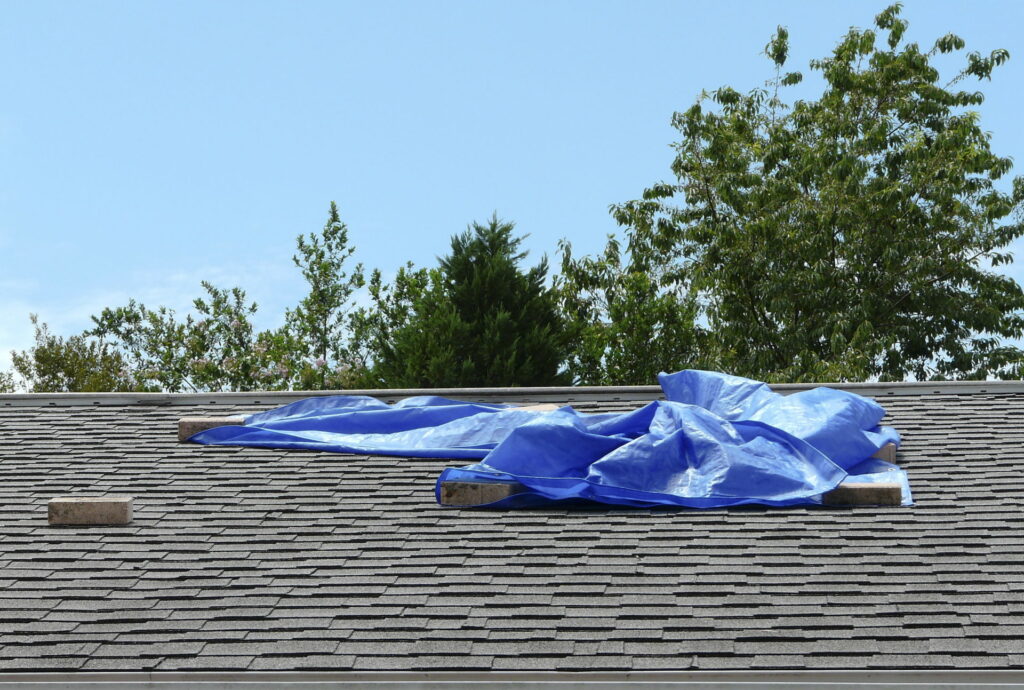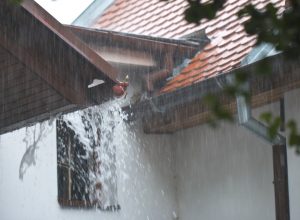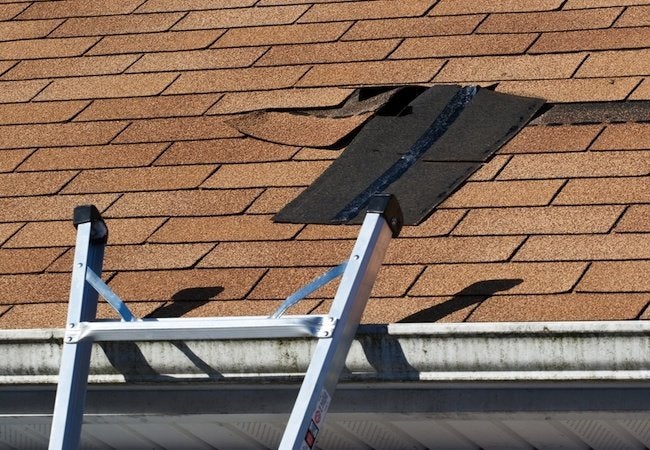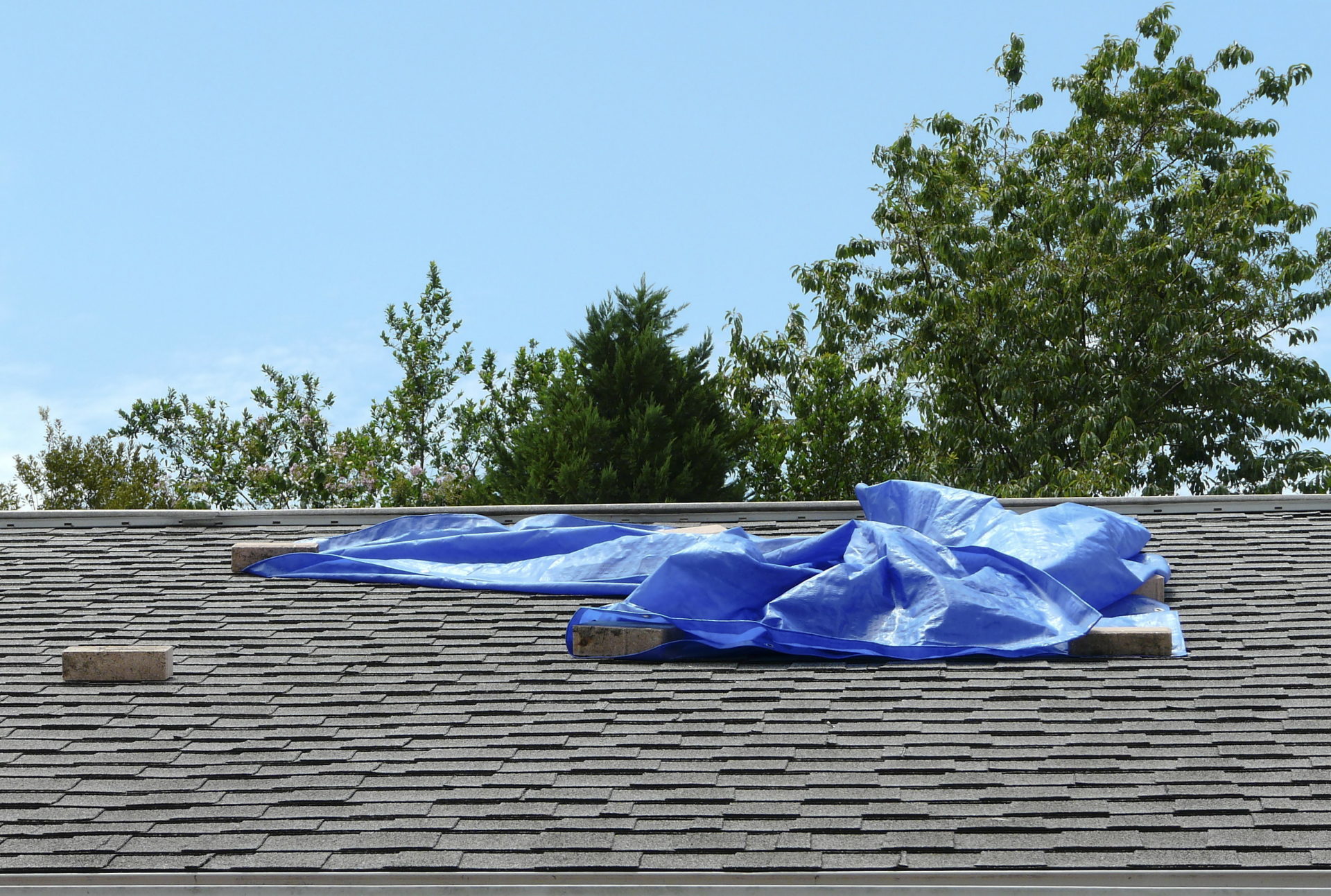In the midst of a violent storm, the last thing you want to discover is a dreaded roof leak. The sound of dripping water and the anxiety of potential damage can be overwhelming. But fear not, as this article aims to provide you with the quick fixes you need to swiftly address a stormy roof leak. By following these expert tips and implementing immediate solutions, you can regain control of the situation and protect your home from further water damage.
Identify the Source of the Leak
Inspect the Attic
When faced with a roof leak, it is crucial to begin by inspecting the attic. Carefully navigate through the space using a flashlight to identify any signs of water damage or dampness. Look for stains or discoloration on the walls, ceiling, or insulation. Additionally, check for any signs of mold or mildew growth. By identifying the source of the leak in the attic, you can gain valuable insights into the location and severity of the problem.
Check the Ceiling
Next, examine the interior ceiling directly beneath the area where the leak is noticeable. Look for any visible signs of water stains or bulging patches. These indications can help pinpoint the specific area of the roof that requires attention. Note that water can travel along the roof’s structure, so the exact spot of the leak may not always align with the visible signs on the interior ceiling.
Examine the Roof
To further identify the source of the leak, it is essential to conduct a thorough examination of the roof. It is advisable to do this during a dry period to ensure safety and maximize visibility. Take a close look at the surface of the roof, paying attention to any damaged or missing shingles, tears in the roofing material, or worn-out flashing. These issues can serve as potential entry points for water during a storm. By carefully inspecting the roof, you can compile a list of necessary repairs or potential problem areas.
Temporary Solutions
Use a Tarp
A tarp can provide temporary relief from a leaking roof during a storm. Start by assessing the size of the affected area and choose an appropriately-sized waterproof tarp. Carefully position and secure the tarp over the damaged section of the roof, ensuring it extends beyond the edges to prevent any additional water infiltration. Secure the tarp using nails or heavy objects, such as bricks, to keep it in place until a permanent repair can be implemented.
Apply Roofing Cement
Roofing cement, also known as roof sealant or mastic, is a versatile product that can effectively seal small leaks. Using a trowel, carefully apply the roofing cement to the damaged area, creating a thin layer that covers the affected spot. Smooth out the cement to ensure proper adhesion and prevent water from seeping through. Keep in mind that this solution is only temporary and should be used as a stopgap measure until a professional can assess and repair the roof.
Use Roofing Tape
Roofing tape is a self-adhesive, waterproof tape designed specifically for temporary roof repairs. It is an effective solution for sealing small cracks or gaps in various roofing materials. To apply roofing tape, thoroughly clean the damaged area and ensure it is dry. Cut the tape to the desired length, remove the backing, and carefully press it onto the damaged spot, ensuring full coverage. Smooth the tape using a roller or your hand to improve adhesion.
Utilize Sealant Spray
Sealant spray is another temporary solution that can help mitigate roof leaks during a storm. It is suitable for sealing small gaps, cracks, or joints where water may penetrate. To use sealant spray, shake the can vigorously and then apply an even coat over the damaged area. Allow the spray to dry completely before exposing it to water or adverse weather conditions. Remember, sealant spray is not a permanent fix, but it can provide temporary relief until a professional can address the underlying issue.
Apply Duct Tape
While not a recommended long-term solution, duct tape can serve as a temporary fix for small leaks in emergency situations. It is essential to use a high-quality, waterproof duct tape to ensure effectiveness. Clean and dry the affected area before applying the tape, making sure to press it firmly onto the surface. It is important to note that duct tape is not a permanent solution and should be used cautiously until professional repairs can be arranged.

This image is property of eagleeyeroofs.com.
Avoiding Further Damage
Clear Gutters and Downspouts
Regularly clearing gutters and downspouts is crucial in preventing future roof leaks. Debris such as leaves, twigs, or dirt can accumulate in the gutters, blocking water flow and causing it to overflow onto the roof. This excess water can eventually seep into the roof structure and lead to leaks during storms. By regularly cleaning gutters and ensuring downspouts are clear, you can divert water away from the roof and protect it from potential damage.
Remove Debris from the Roof
Leaves, branches, and other debris on the roof’s surface can create a barrier that traps water, leading to leaks. It is important to remove any debris promptly, especially before and after storms, to minimize the risk of water infiltration. Use a roof rake or a soft broom to gently clear away debris, taking care not to damage the roofing material. Regular maintenance in this regard can go a long way in preserving the integrity of your roof.
Trim Tree Branches
Overhanging tree branches can pose a significant threat to the roof during storms. Strong winds can cause branches to break or rub against the roof, potentially damaging shingles or other roofing materials. Regularly trim back tree branches that come into contact with or hang too close to the roof. This proactive measure reduces the risk of branches causing direct damage during storms and prevents debris from accumulating on the roof.
Repair or Replace Damaged Shingles
Damaged or missing shingles can compromise the integrity of the roof, making it more susceptible to leaks. Regularly inspect the roof for any signs of cracked, curling, or dislodged shingles. If you notice any issues, it is vital to repair or replace them promptly. This can involve applying new roofing cement to secure loose shingles or replacing extensively damaged ones. By maintaining the condition of your shingles, you can significantly reduce the risk of leaks during storms.
Inspect and Fix Flashing
Flashing serves as a protective barrier in vulnerable areas of the roof, such as joints, chimneys, or vents, preventing water from seeping through. Over time, flashing can degrade or become damaged, compromising its effectiveness. Regularly inspect the flashing for signs of deterioration, including rust, cracks, or gaps. If any issues are identified, it is crucial to repair or replace the flashing promptly. Properly functioning flashing is essential in keeping your roof watertight, especially during stormy weather.
Seeking Professional Help
Call a Roofing Contractor
While temporary solutions can provide immediate relief, it is important to seek professional help to address the underlying causes of a roof leak. A qualified roofing contractor has the expertise to assess the damage, recommend appropriate repairs, and ensure the long-term integrity of your roof. Contact a reputable contractor who specializes in roof repairs or storm damage restoration to schedule an inspection and discuss the necessary steps for a permanent solution.
Consult a Water Damage Restoration Company
In some cases, roof leaks during storms can lead to significant water damage inside the home. If you are dealing with extensive water infiltration, it may be necessary to seek the assistance of a water damage restoration company. These professionals have the necessary equipment and expertise to mitigate water damage, safely remove excess moisture, and restore affected areas. A prompt response from a restoration company can help prevent further damage and ensure a thorough restoration process.
Contact Your Insurance Company
If your home has sustained significant damage due to a roof leak during a storm, it is important to contact your insurance company as soon as possible. Review your homeowner’s insurance policy to understand what is covered and document the extent of the damage. Provide your insurance company with detailed information, including photographs or videos, to support your claim. Working closely with your insurance company can help streamline the claims process and ensure you receive the necessary coverage for repairs.

This image is property of www.abcroofingcorp.com.
Preventive Measures
Regular Roof Maintenance
Regular roof maintenance is key to preventing leaks and prolonging the lifespan of your roof. Schedule annual inspections with a qualified roofing professional who can identify and address minor issues before they escalate. Additionally, keep the roof clean by removing debris, checking for moss or algae growth, and ensuring proper ventilation. By prioritizing regular maintenance, you can catch potential problems early and mitigate the risk of leaks during storms.
Proper Attic Insulation
Proper insulation in the attic is essential in maintaining a durable and leak-free roof. Inadequate insulation can lead to temperature imbalances, which can cause ice dams during winter or excessive heat buildup in summer. Both scenarios can compromise the roof’s integrity and result in leaks. Consult with a professional insulation contractor to ensure your attic insulation meets the recommended standards for your climate. Adequate insulation can ultimately contribute to a more resilient and leak-resistant roof.
Installation of a Roof Membrane
A roof membrane, also known as a waterproofing membrane, is an additional layer of protection that can be installed under the roofing material. It acts as a barrier, preventing water from seeping through the surface and reaching the underlying structure. Consult with a roofing professional to determine if installing a roof membrane is appropriate for your specific needs and circumstances. This preventive measure can provide an extra layer of defense against leaks, especially during stormy weather.
Secure Loose Shingles
Loose or improperly secured shingles are more susceptible to wind damage and leaks during storms. Regularly check for any signs of loose shingles and secure them promptly using roofing cement or appropriate fasteners. Additionally, ensure that any new shingles are adequately installed and properly nailed down. By maintaining the stability of your shingles, you can minimize the risk of leaks and extend the lifespan of your roof.
Check and Repair Roof Vents
Roof vents play a crucial role in regulating airflow and preventing condensation buildup in the attic. It is important to inspect these vents regularly for any signs of damage, such as cracks or loose fittings. Repair or replace damaged vents promptly to ensure proper ventilation. A well-ventilated attic helps maintain the roof’s integrity by preventing excessive heat and moisture accumulation, reducing the risk of leaks during storms.
Temporary Interior Solutions
Collect Water in Containers
When faced with a roof leak during a storm, it is important to collect and contain the water to minimize potential damage. Place waterproof containers strategically beneath the leak to capture the water. This proactive measure prevents water from spreading and damaging the surrounding areas. Ensure the containers are emptied regularly to avoid overflow and ensure effective water collection.
Place a Bucket or Basin
If the leaking area is larger or the water flow is significant, a bucket or basin can be a suitable solution. Choose a sturdy container that can withstand the weight and volume of the leaking water. Position it directly below the leak to collect the water efficiently. Regularly check the bucket or basin to ensure it is not overflowing, emptying it as needed. Placing a thick towel on the bottom of the container can help absorb any splashing or noise caused by the dripping water.
Use Towels or Rags for Absorption
In addition to collecting the water, using towels or rags can help absorb the moisture and prevent it from spreading further. Place absorbent materials around the leaking area, ensuring they are in direct contact with the water. This will help minimize damage to the surrounding surfaces and contain the moisture until a permanent repair can be implemented. Regularly monitor and replace the towels or rags to maintain their effectiveness.
Set up a Dehumidifier
To combat the increased moisture resulting from a roof leak, consider setting up a dehumidifier in the affected area. A dehumidifier helps remove excess moisture from the air, reducing the risk of mold growth and further damage to the interior. Follow the manufacturer’s instructions to properly set up and operate the dehumidifier. Empty the water collection container regularly to ensure continuous functionality and optimal performance.
Utilize Fans or Open Windows for Ventilation
Proper ventilation is key to preventing the buildup of excess moisture caused by a roof leak. If it is safe to do so, use fans or open windows to promote airflow and expedite drying. Position fans strategically to direct air towards the affected area. Opening windows can facilitate cross-ventilation, helping to dissipate moisture and reduce humidity levels. However, take precautions to ensure rain or strong winds do not exacerbate the problem or cause additional damage.

This image is property of global-uploads.webflow.com.
Emergency Roof Repair Kits
Contents of an Emergency Roof Repair Kit
An emergency roof repair kit typically contains essential materials and tools to facilitate temporary roof repairs. These kits may include roofing cement, roofing tape, tarp, sealant spray, gloves, and a trowel. Some kits may also include safety equipment such as goggles or a harness. It is advisable to have an emergency roof repair kit readily available in case of severe leaks or storm damage.
How to Use an Emergency Roof Repair Kit
When utilizing an emergency roof repair kit, it is essential to carefully follow the instructions provided. Start by assessing the extent of the damage and identifying the appropriate materials for the repair. Whether using roofing cement, tape, or a tarp, ensure the damaged area is clean and dry before starting the repairs. Follow the manufacturer’s guidelines for applying the materials, taking necessary safety precautions. Emergency roof repair kits can provide immediate relief until a professional can address the underlying issue.
Pros and Cons of Emergency Roof Repair Kits
Emergency roof repair kits offer homeowners a temporary solution to address roof leaks during storms. The kits are accessible, affordable, and relatively easy to use. They can provide immediate relief and mitigate further damage. However, it is important to recognize their limitations. Emergency roof repair kits are temporary fixes and should not replace professional repairs. While they can help stabilize the situation, they do not address the root cause of the leak. Therefore, it is crucial to seek professional assistance to assess and repair the roof properly.
Weatherproofing your Roof
Use a Waterproof Roof Sealant
Applying a waterproof roof sealant can help protect your roof from the elements, including heavy rain and storms. Roof sealants are specifically designed to create a watertight barrier and prevent leaks. Clean the roof surface thoroughly before applying the sealant, ensuring it is free from dirt, debris, and loose material. Follow the manufacturer’s instructions to evenly apply the sealant, paying special attention to vulnerable areas such as joints, intersections, and flashing. Regularly inspect and touch up the sealant as part of your ongoing roof maintenance.
Apply a Roof Coating
Roof coatings provide an additional layer of protection against water infiltration and other weather-related damage. They can be applied to various types of roofs, including asphalt, metal, or flat roofs. Roof coatings are available in different formulations, such as acrylic, silicone, or elastomeric. Before applying a roof coating, thoroughly clean the roof surface to ensure proper adhesion. Follow the manufacturer’s instructions to apply the coating evenly, covering the entire roof surface. Roof coatings can extend the lifespan of your roof and enhance its resistance to leaks and other weather-related issues.
Install Storm Clips or Hurricane Straps
Storm clips or hurricane straps are metal fasteners designed to reinforce the structural connections between the roof and the walls. Installing these clips or straps can significantly improve the roof’s resistance to strong winds during storms. Consult with a professional contractor to determine the appropriate clips or straps for your specific roof design and local building codes. Proper installation of storm clips or hurricane straps can help secure your roof and reduce the risk of leaks caused by wind damage.
Secure Loose Tiles or Slates
Loose tiles or slates can create vulnerabilities on a roof surface, allowing water to penetrate and cause leaks. Regularly inspect your roof and identify any loose or missing tiles or slates. Carefully secure them using appropriate fasteners or roofing cement. Take precautions and consult with a professional if you have a tile or slate roof, as the weight and design require specific repair techniques. By keeping your roof’s surface intact and secure, you can prevent leaks and enhance its overall weatherproofing.
Ensure Proper Flashing Installation
Flashing is an essential component that protects vulnerable areas of the roof, such as chimney stacks, vents, and skylights, from water infiltration. It is crucial to ensure that flashing is installed correctly and sealed tightly to prevent leaks. Regularly examine the flashing for signs of damage, deterioration, or separation. If any issues are observed, promptly repair or replace the flashing. Properly installed flashing serves as a vital weatherproofing mechanism, safeguarding your roof and preventing leaks during storms.

This image is property of empire-s3-production.bobvila.com.
Preventing Leaks in Flat Roofs
Check for Ponding Water
Flat roofs are prone to ponding water, which can lead to leaks and structural damage. After rain or storms, check your flat roof for any areas where water is pooling or not draining properly. Standing water can cause the roof membrane to deteriorate, leading to leaks. If you notice ponding water, consult with a professional roofing contractor to assess the drainage system and recommend necessary improvements. Proper drainage is vital in preventing leaks and extending the lifespan of your flat roof.
Apply Liquid Rubber or Waterproof Membrane
Liquid rubber or liquid waterproof membranes are popular options for protecting flat roofs from leaks. These liquid products can be applied directly to the roof surface, creating a seamless and waterproof barrier. Before applying, clean and prepare the roof surface to ensure proper adhesion. Follow the manufacturer’s instructions for application, including the recommended number of coats and drying time. Liquid rubber or waterproof membranes can enhance the weatherproofing of a flat roof, helping to prevent leaks during storms.
Repair Cracks or Blisters
Cracks or blisters in a flat roof’s surface can compromise its integrity and lead to leaks during storms. Regularly inspect the roof for any signs of damage, including cracks, splits, or blistering. Clean the affected area thoroughly, removing any loose materials or debris. Depending on the severity of the damage, apply a suitable patching material or filler, following the manufacturer’s instructions. Ensure the repaired area is properly sealed and smooth to prevent water infiltration.
Maintain and Clean Drains
Proper maintenance and regular cleaning of drains are crucial in preventing leaks on flat roofs. Drains can become clogged with debris, leaves, or sediment, impeding water flow and causing water to backup. Regularly inspect the drains and remove any obstructions. Clean the drains by using a plumber’s snake or flushing with water to ensure they are free from blockages. Adequate drainage is essential in maintaining a leak-free flat roof, especially during heavy rainfall or storms.
Regularly Inspect and Maintain Skylights
Skylights can be susceptible to leaks if they are not properly installed, sealed, or maintained. Regularly inspect the skylights for signs of damage, deterioration, or loose fittings. Ensure that the skylight’s flashing is properly installed and sealed to prevent water infiltration. Clean the skylights regularly, removing any debris or dirt that may compromise their effectiveness. If any issues are detected, consult with a professional to properly repair or replace the skylights. By taking care of your skylights, you can minimize the risk of leaks and maintain the weatherproofing of your flat roof.
Additional Considerations
Stay Safe
When dealing with roof leaks during storms, safety should always be the top priority. Avoid accessing the roof or conducting repairs during adverse weather conditions, as it can be hazardous. If you are unsure or uncomfortable with any aspect of roof inspection or repair, it is advisable to seek professional assistance. Working at heights can be dangerous, so ensure you have the necessary safety equipment, such as a sturdy ladder, harness, and appropriate footwear. Exercise caution and adhere to safety guidelines at all times.
Assess the Extent of the Damage
Before implementing any repairs, it is important to assess the extent of the damage caused by a roof leak during a storm. Thoroughly inspect the affected areas and document any visible signs of damage. This includes interior water stains, peeling paint, rotting wood, or any other visible evidence of water infiltration. Understanding the full extent of the damage will help you determine the appropriate course of action and allow for a more accurate assessment by professionals if required.
Document the Damage
Maintaining detailed documentation of the damage caused by a roof leak can prove invaluable when dealing with insurance claims or professional repairs. Take photographs or videos of the affected areas, capturing the visible evidence of water damage. Keep a record of any temporary repairs you have implemented and any related expenses incurred. This documentation will provide evidence of the damage and support your claims or discussions with insurance companies and contractors.
Review Your Insurance Policy
Understanding the coverage provided by your homeowner’s insurance policy is essential when dealing with a roof leak during a storm. Review your policy to determine the extent of coverage for various types of damage, including leaks, water infiltration, or storm-related issues. Take note of any deductibles, exclusions, or limitations that may apply. Familiarize yourself with the claims process and the necessary documentation required to support your claim. If in doubt, contact your insurance company for clarification or guidance.
Consider a Professional Roof Inspection
Even if the roof leak appears to be temporarily resolved or if only minor damage is evident, it is advisable to consider a professional roof inspection. A qualified roofing professional can assess the entire roof, identify any concealed damage, and provide expert advice on necessary repairs or maintenance. Regular roof inspections, especially after storm events, can detect underlying issues that may lead to future leaks. Investing in a professional inspection can provide peace of mind and help ensure the long-term integrity of your roof.
In conclusion, dealing with a roof leak during a storm requires a systematic approach to identify the source, implement temporary solutions, mitigate further damage, seek professional help when necessary, and take preventive measures. By following these guidelines and being proactive in your maintenance and repairs, you can minimize the risk of leaks, protect your home from water damage, and maintain a structurally sound and weather-resistant roof. Remember, safety should always be a priority, and professional assistance should be sought for complex repairs or extensive damage.

This image is property of modernize.com.
